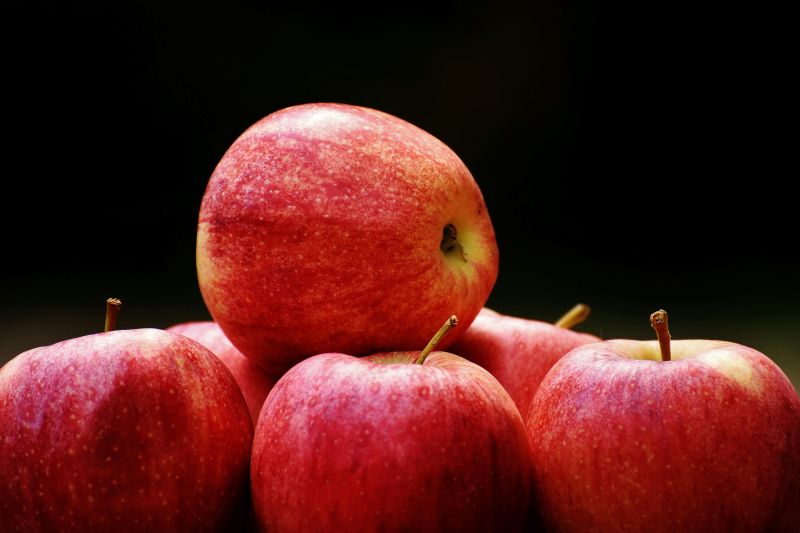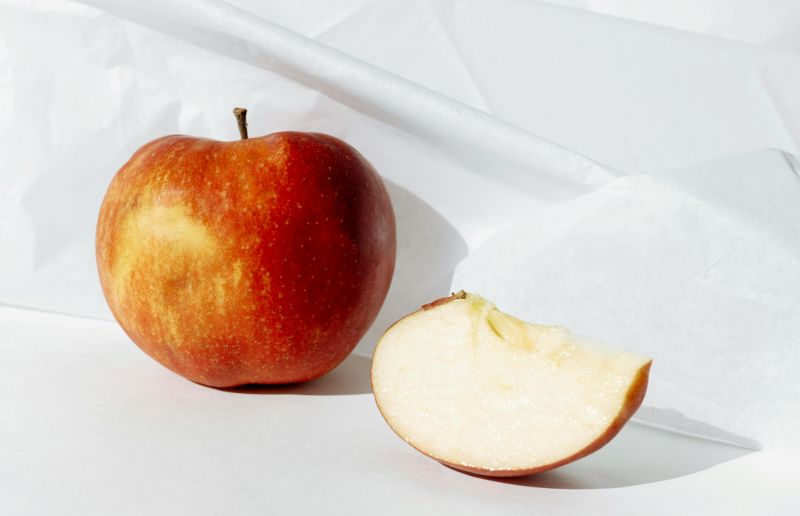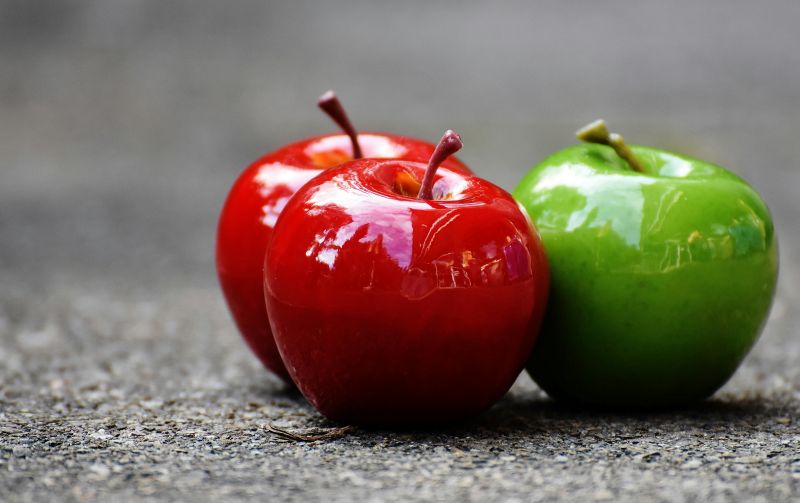If you’ve ever bitten into a crisp, sweet Honeycrisp apple and thought, “Honeycrisp Apple Nutrition Data” you’re not alone. That magical crunch and juicy burst can feel like a treat. But here’s the truth—Honeycrisp apples are more than just delicious. They’re also packed with good-for-you nutrients that might surprise you.
Whether you’re someone watching your sugar intake, looking for organic options, or just curious about Honeycrisp apple nutrition facts USDA-style, this guide is for you.
Let’s break it all down, bite by bite.

What Is A Honeycrisp Apple And Why Is It So Popular?
The Honeycrisp apple was developed in Minnesota in the 1990s, designed to handle cold winters and appeal to people who enjoy a perfect balance of sweet and tart. It quickly became a fan favorite—not just across the U.S., but globally.
What makes it stand out?
- Its crisp texture (hence the name)
- Juicy flesh that doesn’t brown quickly
- A refreshing mix of sweetness with a tiny tang
These apples are often bigger than your average apple. So when looking at Honeycrisp Apple Nutrition Data, it’s important to remember that size affects everything—from calories to sugar content.
People love Honeycrisp apples because they feel like a treat, but they still deliver powerful nutrition benefits. They’re great for breakfast, school lunches, pre-workout snacks, or just munching on while working.
Honeycrisp Apple Nutrition Facts: Breaking It Down
Let’s get to the meat of it—what’s actually in a Honeycrisp apple?
According to the USDA, a medium-sized Honeycrisp apple (about 200g) contains:
- Calories: 100
- Carbohydrates: 27g
- Sugars: 19g
- Dietary Fiber: 4g
- Protein: Less than 1g
- Fat: 0g
- Vitamin C: 8% of the Daily Value
- Potassium: 210mg
- Water content: Around 85%
Now, these numbers shift slightly when you’re looking at small Honeycrisp apple nutrition facts or large Honeycrisp apple nutrition facts. A small apple might be closer to 80 calories, while a large one can push 120 or more.
Don’t forget—size really matters here.
For those buying bulk from wholesale stores, like Costco, Costco Honeycrisp Apple Nutrition Data facts are usually based on larger apples. These often come in at over 250 grams per apple, which means higher carbs and sugar. But that’s not a bad thing—it’s just something to be aware of if you’re counting.

Are Organic Honeycrisp Apples Healthier?
Organic Honeycrisp apple nutrition facts aren’t drastically different from non-organic ones in terms of calories or vitamins. But the big difference lies in how the apples are grown.
Organic Honeycrisps are grown without synthetic pesticides or fertilizers. Some folks feel better choosing them for peace of mind or to reduce exposure to chemicals. While science is still debating the long-term health effects of eating conventional versus organic fruit, organic options do tend to have:
- A slightly thicker skin (because they have to defend themselves naturally)
- A more intense flavor (some say sweeter or more floral)
If you’re shopping in places like Whole Foods or local farmers’ markets, you’ll notice the Honeycrisp Apple Nutrition Data listed tend to focus more on farming practices than nutrient content. But the benefits of fiber, antioxidants, and vitamins remain the same.
Health Benefits Of Eating Honeycrisp Apples Daily
There’s a reason people say “an apple a day keeps the doctor away.”
When it comes to Honeycrisp Apple Nutrition Data, here’s what you’re really getting with each bite:
1. Gut Health From Fiber
One medium Honeycrisp apple contains about 4 grams of fiber, mostly in the skin. That helps with digestion and can support regular bowel movements. It also feeds the good bacteria in your gut, which is important for your immune system and mental health.
2. Natural Sugar With a Slow Burn
Yes, apples are high in natural sugars, but the fiber helps slow down how quickly it’s absorbed. That means you avoid the sharp blood sugar spike you’d get from candy or soda. This makes apples a smarter snack for kids, diabetics, and anyone watching their energy levels.
3. Hydration You Can Eat
With 85% water content, Honeycrisp apples are a sneaky way to stay hydrated—especially on hot days or after a workout.
4. Packed With Antioxidants
Apples, especially the skin, contain polyphenols. These are plant compounds that may help lower inflammation, support heart health, and even reduce cancer risk. While the USDA doesn’t list polyphenol content on its standard nutrition labels, it’s a known benefit.
So, if you’re wondering about the big picture of Honeycrisp apple nutrition, think beyond the calories. These apples are like nature’s candy—with some real perks for your body.
Portion Sizes: Why One Size Doesn’t Fit All
Not all apples are created equal. And definitely not all Honeycrisp apples are the same size. That’s why portion awareness matters.
Let’s break down what you can expect from different apple sizes:
| Apple Size | Weight (Approx.) | Calories | Sugar | Fiber |
| Small Honeycrisp Apple | 150g | 75–80 | 14g | 3g |
| Medium Honeycrisp Apple | 200g | 100 | 19g | 4g |
| Large Honeycrisp Apple | 250g+ | 120–130 | 24g | 5g |
So, when you’re grabbing a snack or planning a meal, it’s good to eyeball the apple’s size. For example, if you’re buying a bag at Costco, those apples are likely large. That’s why Costco Honeycrisp apples nutrition facts may be a bit more “loaded” than the ones you buy from a corner market.
It’s not bad—it’s just honest food math.

FAQs
1. How many calories are in a large Honeycrisp apple?
A large Honeycrisp apple (about 250g) typically has between 120 to 130 calories, depending on its exact size and ripeness.
2. Are organic Honeycrisp apples more nutritious than regular ones?
Organic Honeycrisp apple nutrition facts are almost identical to non-organic apples in terms of calories and nutrients. The main difference lies in the absence of synthetic pesticides.
3. Do Honeycrisp apples have too much sugar?
They do have more sugar than some apple varieties—about 19g in a medium apple. However, this sugar is naturally occurring and balanced by fiber, making it a healthy snack.
4. Are Honeycrisp apples good for weight loss?
Yes! With their high fiber and water content, they help you feel full longer, making them great for portion control and healthy snacking.
5. How do Honeycrisp apples compare to other apple types nutritionally?
They’re similar in basic nutrients but often have slightly higher sugar and calorie content due to their larger size and sweetness.
Final Thoughts: Is a Honeycrisp Apple a Smart Snack?
If you’re someone who likes to snack smart but also wants something satisfying, Honeycrisp apples are a real win. Whether you’re comparing large Honeycrisp apple nutrition facts for meal planning or just looking up honeycrisp apple nutrition data to ease your curiosity, this fruit checks a lot of boxes.
It’s sweet, crunchy, refreshing—and surprisingly good for you.
Plus, they’re easy to pack, mess-free, and kid-friendly. What more could you ask from a fruit?
Just remember: size matters, organic is a personal choice, and even something as simple as an apple can make a difference in how you feel.
Next time you’re in Costco, your local farmers’ market, or even the school cafeteria—grab that Honeycrisp. Your taste buds (and your body) will thank you.

